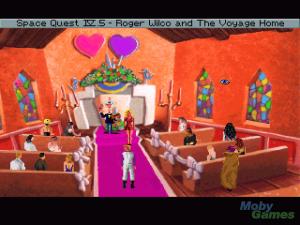Hacking tradtional industries
Some friend of mine once told me that to disrupt you need to make a product ten times better than the available options, as the TechCrunch Disrupt season starts my prediction is that we’ll see a lot of really smart guys trying to disrupt social media or mobile digital photography, or tinker-town. Actually, I believe that there’s actually a chance to disrupt all of them, but those industries have been disrupted several time in the past few years, with BIG players still ruling with iron fist, so why would anyone want to go in that direction?
It’s true that very-complex-unsexy apps don’t win hackathons, believe me, no one want to see a widget that warns you about boring disclosures nor a really useful but kind of complex app to make sense of your social interactions. But no one want to see yet ANOTHER photo app either, at least most of the investors around seems to be very tired of them, I bet that they think like me when I hear someone saying that they want to be the “next facebook“: the cliche industry is in dire need for innovation too. So, by going in that direction you may probably win a facebook-sponsored prize, but you will most certainly use that mini-iPad to work in something else once the hackathon is over.
So what to do? In the last few months I’ve been focusing in industries with high potential and little disruption, the basic idea is: what would be easier to do? A product ten times better than Twitter -a technology based company with lots of innovative inertia- or a product times times better in an traditional industry with less innovation drive like, for instance, airlines? What in theory would be easier to disrupt, the photo sharing industry or the mining industry?
There are some constraints in the economics of disruption: traditional non-technology based industries are most costly in terms of innovation, you need better ideas with less available information. Ten years ago no one outside the banking industry would had a chance of developing a payment platform, ISO8583 was an obscure protocol reserved to reclusive developers writing code in COBOL, even though the technology was there (SMS banking was starting in India) “10 times better” was a relative term: was it 10 times more secure? Fast? Reliable? Profitable? So you’d need a lot of information before being able to get clients on board. These days, you just need Parse, Stripe and an iPhone and you have yourself a mobile PoS. On the other hand, the costs of disrupting an established technology company are high in terms of creativity, you need a really good idea in order to disrupt something that is close to the state of the art.
What to do? What to do?
Knowledge is more expensive than creativity, but creativity you can’t buy, therefore knowledge-intensive industries could be free game for the knowledge-hungry. In the last months I have focused my attention in industries under served in terms of innovation, there seems to be plenty of space for disruption. The travel industry, for example, haven’t changed most since the introduction of discount websites like Priceline or Orbitz, and they haven’t grasped the opportunity presented by social networks. This is the idea behind consumer software startups like The Traveller Commons, a app-based service targeting big niches like the business and solo travelers.
Another industry ripe for disruption in the financial sector. So far, most of the innovation is focused in creating very clever instruments to securitize stuff in dark and complex ways or software to process gazillions of transactions per millisecond, though creative, these are intended to serve companies and make money for very big cats. In this area, decentralized currencies -i.e. Bitcoin– and government-backed digital currencies like MintChip present great opportunities for disruption. There are already some good initiatives like the Bitcoin ATM’s, a securities exchange based in decentralized currencies (DSX) or a payment network for farmer markets based on bitcoin too (Zapan).
Another interesting case in the video games industry. In the past decades technology has pushed this sector to the edge, by improving the user experience with incredible graphics, incorporating AI or with massive online worlds. But in the last few years the inertia seems to be vanishing, mobile games are aimed to casual players for whom killer 3D graphics are a non-issue -therefore most of the characters make Roger Wilco look like Buzz Lightyear in Toy Story 10-, AI is of no use when the game sequence is shorter than a one-way trip on the subway and multiplayer experience is still mostly limited to cow-clicking. It seems that the biggest achievement has been the elimination of the Joystick as the only controller option. So, there seems to be plenty of chance for disruption: social networks are underutilized, multiplayer experience in mobile games is still, in general terms, poor (at least until Rovio comes up with World of Angry Birds), the status-quo gaming experience remains untouched despite the efforts of prominent figures like Ian Bogost or Peter Molyneux, and AI is still to be incorporated into mobile games. Add all this to the renaissance of the indie games movement spiced by the advent of the PS4 development kits, and you can see the opportunities from miles and miles.
As the travel, financial and video games industries there are many more avid for swift and radical change through technological means: mining, food, freight and even the health service industries lack of the appropriate utilization of social and mobile technologies. So when you are ready to develop your next idea you may want to do your homework about any of these industries and get ready to disrupt.


